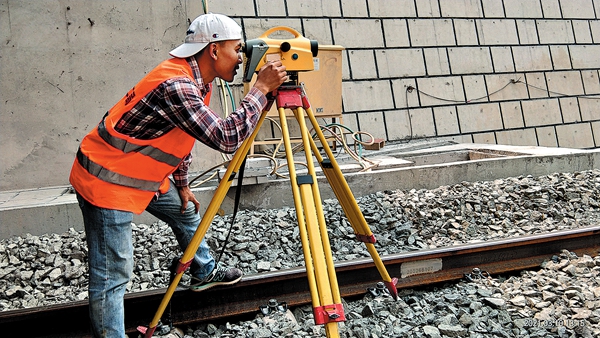
Laotian students doing internships at companies involved in the construction of the China-Laos railway. They are among a total of 25 students from Souphanouvong University in Laos who are currently studying engineering at the Shanghai Institute of Technology.[Photo provided to China Daily]
Laotian engineering students and railway interns team up with their Chinese peers to document and promote the soon-to-be completed China-Laos rail project.
Given that Laos currently has just one 3.5-kilometer rail route in operation, it is difficult for many of the country's natives, like Likhamsouyiaseng Tong, to imagine a service that connects the capital city of Vientiane with China.
"I used to ask myself: Will such a railway appear? If yes, when?" says Tong, who started studying at the Shanghai Institute of Technology two years ago. "But my doubts are gone now that the China-Laos railway is about to open."
All 67 communication towers along the China-Laos railway were completed in May, and work on the longest bridge along the route, the 7.53 km Phonethong Bridge, finished in June, according to Xinhua News Agency.
The construction of the project started in December 2016 and operation of the railway is slated to start in December. The railway will reduce the travel time between Vientiane and the border station of Boten from a two-day drive to a three-hour train journey.
Tong is one of the 25 students from Souphanouvong University in Laos who are currently studying engineering at the Shanghai institute to become railway experts. Eight of them are currently working as interns in companies that are involved in the construction of the railway.
Even before the railway is able to facilitate exchanges between the two countries, the students themselves have already been doing so.
On June 24, the Belt and Road Lancang-Mekong Railway Connectivity Center was co-founded by the Shanghai Institute of Technology, the Shanghai People's Association for Friendship with Foreign Countries, Souphanouvong University, China Railway Academy Co and the China Railway 24th Bureau Group Shanghai Railway Co.

Laotian students doing internships at companies involved in the construction of the China-Laos railway. They are among a total of 25 students from Souphanouvong University in Laos who are currently studying engineering at the Shanghai Institute of Technology.[Photo provided to China Daily]
The first project of the center was the "virtual tour of the China-Laos railway", which features a video series in which Chinese and Laotian students at the institute share stories from their internship and introduce places of interest along the route taken by railway.
The first video of the series was released on the WeChat account Zhonglao Tielutong, or China-Laos Railway Connection. In a three-minute video, Laotian student La Thor introduces the Belt and Road Initiative and the railway project in his native language.
"The construction of the China-Laos railway is a main infrastructure project of the Belt and Road Initiative, and it will also be an economic and cultural exchange platform," he says. "The Chinese will be able to enjoy our country's beautiful scenery along the railway, and Laotian people can ship their local produce to China through the railway.
"I have experienced the convenience of the railway after coming to Shanghai to study, so I really want my countrymen to enjoy the convenience and economic benefits of the China-Laos railway. I also want my Chinese friends to come and learn more about Laos when the line is open," he adds.
Chinese student Chen Jiacong says, "This summer, we will also go to the construction sites with our Laotian classmates and interview the locals to find out their expectations for the railway. We will then share their thoughts, and the local cultures we discover, on the internet."
Besides the virtual tour, a MOOC(massive open online courses) classroom will also be launched on the institute's e-learning platform to help students in the Mekong region gain knowledge related to railway systems. Its courses will include an introduction to railway engineering, rail transportation and Shanghai's urban development, including case studies from the construction of the China-Laos railway.
Guo Qingsong, Party chief of the Shanghai Institute of Technology, says the students are goodwill ambassadors between the two countries, and that the institute will continue to provide training for the Laotian students so that they can become the trailblazers of future railroad construction efforts in Laos.

